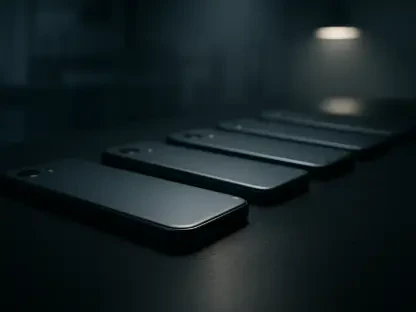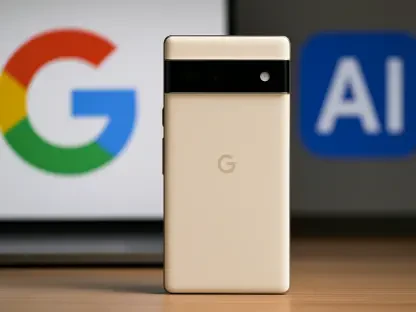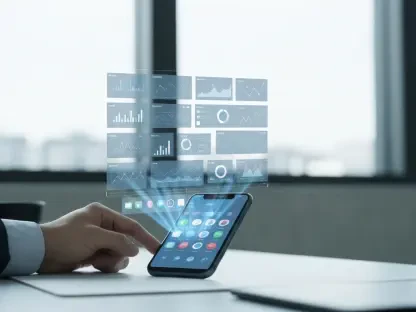What if the sleek tablet in your hand could handle every task your trusty laptop does, from crunching spreadsheets to designing graphics, without the bulk or hefty price tag? In 2025, Apple’s iPad lineup is no longer just a sidekick for casual browsing—it’s a serious contender aiming to redefine personal computing. With raw power rivaling MacBooks and a design focused on portability, the line between tablet and laptop has never been blurrier. This shift raises a pivotal question: can an iPad truly take over as the primary device for professionals, students, and creatives alike?
A New Era of Computing—Is Your Laptop Obsolete?
The landscape of technology is evolving at a staggering pace, and Apple’s latest iPad models are at the forefront, challenging the necessity of traditional laptops. Equipped with M-series chips, such as the M4 in the iPad Pro, these tablets deliver performance scores like 14,586 on Geekbench 6, often outpacing entry-level MacBooks. This isn’t merely about a flashy upgrade; it signals a fundamental change in how devices are perceived, pushing users to question if a laptop’s bulk is still justified in an era where slim, versatile tablets can pack the same punch.
Beyond raw power, the design philosophy behind iPads emphasizes mobility without sacrificing capability. A device weighing under a pound can now transform into a workstation with the right accessories, fitting seamlessly into a fast-paced, on-the-go lifestyle. As work and learning environments continue to prioritize flexibility, the notion of carrying a heavier, less adaptable laptop feels increasingly outdated, setting the stage for a deeper exploration of this trend.
Why the iPad vs. Laptop Debate Matters Now
In today’s hybrid world of remote work and digital education, choosing the right tool can make or break productivity. Apple’s strategy to merge iPad and MacBook functionalities taps into a pressing need for all-in-one devices that balance power with affordability. With economic constraints pushing consumers toward cost-effective options, the decision between an iPad starting at $349 and a MacBook Air at $999 carries significant weight for budget-conscious buyers.
This debate extends beyond mere specs or price tags—it’s about adapting to a cultural shift where versatility reigns supreme. Students juggling virtual classes, professionals managing projects from coffee shops, and artists sketching on the fly all seek a single device to meet diverse demands. Understanding whether an iPad can fulfill these roles isn’t just a tech discussion; it’s a personal crossroads that could reshape daily routines and financial planning.
Breaking Down Apple’s Convergence Strategy—Key Factors at Play
Apple’s vision to fuse the worlds of tablets and laptops hinges on several groundbreaking elements that redefine what a tablet can achieve. Hardware stands as a cornerstone, with M-series chips bringing laptop-grade performance to iPads, enabling tasks like video editing or complex multitasking with ease. This leap in processing power erases old stereotypes of tablets as underpowered, positioning them as direct competitors to traditional machines.
Screen sizes also play a crucial role, with options like the 13-inch iPad Pro mirroring the display real estate of smaller MacBooks. Accessories further bridge the gap—the Magic Keyboard with its trackpad transforms an iPad into a near-laptop setup, while the Apple Pencil offers unmatched precision for creatives. However, limitations persist, such as the single USB-C port compared to multiple on MacBooks, often requiring cumbersome dongles for connectivity.
Software advancements and pricing seal Apple’s intent to create a hybrid category. The latest iPadOS updates introduce multitasking features like resizable app windows, mimicking desktop workflows, while base models remain hundreds of dollars cheaper than MacBooks, even with accessory costs. Together, these factors challenge the necessity of owning separate devices, urging a reevaluation of what constitutes a primary computing tool.
Voices from the Field—What Experts and Users Say
Real-world feedback provides a grounded perspective on Apple’s ambitious push, highlighting both enthusiasm and caution. Tech reporter Samantha Mangino, who has relied on an iPad Pro for much of her workload, notes that “the tablet has become the centerpiece of productivity for many, not just a secondary gadget.” Her experience underscores a growing trend among users who value the device’s adaptability when paired with a keyboard.
Creative professionals echo this sentiment, often praising the Apple Pencil for its precision in design work. A graphic artist shared that “no laptop stylus comes close to the fluidity of sketching on an iPad,” pointing to a niche where tablets outshine traditional setups. Yet, not all feedback is glowing—industry analysts warn that power users needing extensive port options or specialized software still gravitate toward MacBooks, revealing a divide between casual and intensive use cases that Apple must address.
Making the Switch—How to Decide if an iPad Works for You
Navigating the choice between an iPad and a laptop requires a tailored approach to personal needs and workflows. Start by evaluating daily tasks—if the focus is on web-based work, content creation, or basic editing, an iPad with a Magic Keyboard can likely suffice. For heavier demands like 3D rendering or setups with multiple peripherals, testing a high-end iPad Pro alongside a laptop backup ensures no critical gaps emerge.
Budget considerations also weigh heavily—an iPad Air with accessories totals around $868, undercutting the $999 MacBook Air, making it a smart pick for cost-savvy users whose needs align. Portability is another factor; if lightweight travel is a priority, the iPad’s design triumphs, but desk-bound setups with multiple monitors might demand a MacBook’s connectivity. A practical step is to trial an iPad setup for a week, using it for routine tasks to pinpoint any frustrations with software or hardware limitations, ensuring a decision rooted in real experience.
Looking back, the journey of Apple’s convergence strategy unfolded with remarkable clarity, as iPads evolved from mere tablets to formidable laptop contenders. Reflecting on this shift, it became evident that the future of personal computing leaned toward hybrid solutions. For those considering the switch today, the next step lies in experimenting with an iPad for specific tasks, weighing its strengths against lingering needs for traditional setups. As technology continues to blend boundaries, staying open to testing and adapting to these innovations remains the key to harnessing their full potential.









